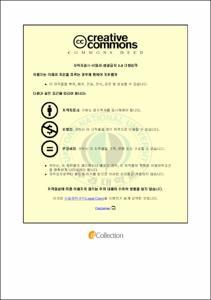2009 개정 교육과정에 따른 초등학교 영어 3.4학년군 교과서 분석-듣기.말하기 영역역에서의 의사소통 능력을 중심으로
- Alternative Title
- An Analysis on the Third and Fourth Grade Elementary School English Textbooks Based on the 2009 Curriculum Revision:Focus on Communicative Abilities in Listening and Speaking
- Abstract
- An Analysis on the Third and Fourth Grade Elementary School English Textbooks Based on the 2009 Curriculum Revision:
Focus on Communicative Abilities in Listening and Speaking
Soon-Geum Cho
Graduate School of Education
Pukyong National University
Abstract
The purpose of this study is to analyze how effectively the third and fourth year elementary school English textbooks, which will be used in 2014, reflect the goals of the elementary English curriculum revised in 2009. To this end, the dialogues, passages, and activity contents in the listening and speaking sections of three out of the five third and fourth year textbooks were analyzed. The analysis criteria and results are as follows:
First, the contents of the listening and speaking sections were analyzed based on sociolinguistic elements such as topics, places and dialogue structures. The analysis indicated that although the revised curriculum encourages relating sociolinguistic elements to students' daily environments in order to familiarize them with communication activities, only some elements were presented, and often in a limited fashion.
Second, the analysis revealed that only three of the eleven communication function categories recommended in the revised curriculum accounted for 75% of the textbooks' total contents. This indicates that the textbooks did not include a wide range of the recommended communication functions.
Third, the analysis of listening and speaking activities showed that rather than presenting a variety of activities designed to extend students' self-directed communication abilities, the textbooks disproportionately featured a few simple activities.
Based on the findings listed above, the newly developed third and fourth year elementary school English textbooks might not satisfy the goals of the revised curriculum, which aims to enable students to communicate in English in their daily lives. In order to overcome these limitations and create English textbooks that should increase students' communicative abilities more effectively, textbook development committee members could make an effort during the textbook development process to uniformly reflect the essential elements of language. Furthermore, teachers might have to restructure the contents of the textbooks in the classroom in order to improve their students' English communicative abilities.
- Issued Date
- 2014
- Awarded Date
- 2014. 2
- Type
- Dissertation
- Publisher
- 부경대학교
- Alternative Author(s)
- SOON-GEUM CHO
- Affiliation
- 교육대학원
- Department
- 교육대학원 초등영어교육전공
- Advisor
- 박매란
- Table Of Contents
- 목 차
ABSTRACT
Ⅰ. 서 론 1
1.1 연구의 필요성 및 목적 1
1.2 연구 과제 3
1.3 연구의 제한점 3
Ⅱ. 이론적 배경 4
2.1 2009 개정 초등영어과 교육과정 4
2.2 초등영어 교재의 의미와 역할 6
2.3 의사소통 능력 7
2.4 선행 연구 11
Ⅲ. 연구 방법 14
3.1 분석 대상과 영역 14
3.2 분석 기준의 설정 및 분석 방법 15
3.3 자료 분석 23
Ⅳ. 분석 결과 및 논의 24
4.1 교과서 구성 24
4.2 사회 언어적 요소 25
4.3 의사소통 기능 36
4.4 듣기․말하기 활동 41
Ⅴ. 결론 및 제언 47
5.1 결론 47
5.2 제언 50
참고문헌 51
부록 55
- Degree
- Master
- Files in This Item:
-
-
Download
 2009 개정 교육과정에 따른 초등학교 영어 3.4학년군 교과서 분석-듣기.말하기 영역역에서의 의사소통 능력을 중심으로.pdf
기타 데이터 / 1.65 MB / Adobe PDF
2009 개정 교육과정에 따른 초등학교 영어 3.4학년군 교과서 분석-듣기.말하기 영역역에서의 의사소통 능력을 중심으로.pdf
기타 데이터 / 1.65 MB / Adobe PDF
-
Items in Repository are protected by copyright, with all rights reserved, unless otherwise indicated.